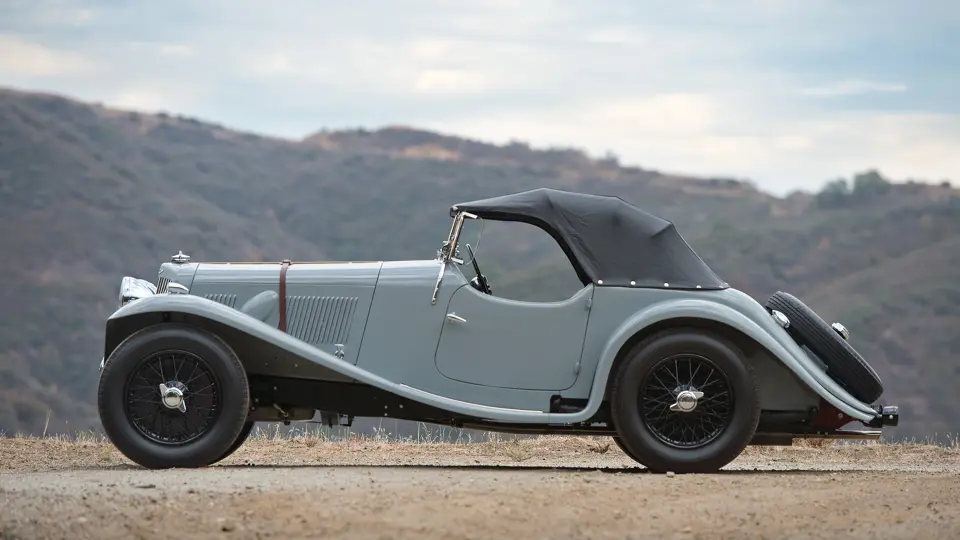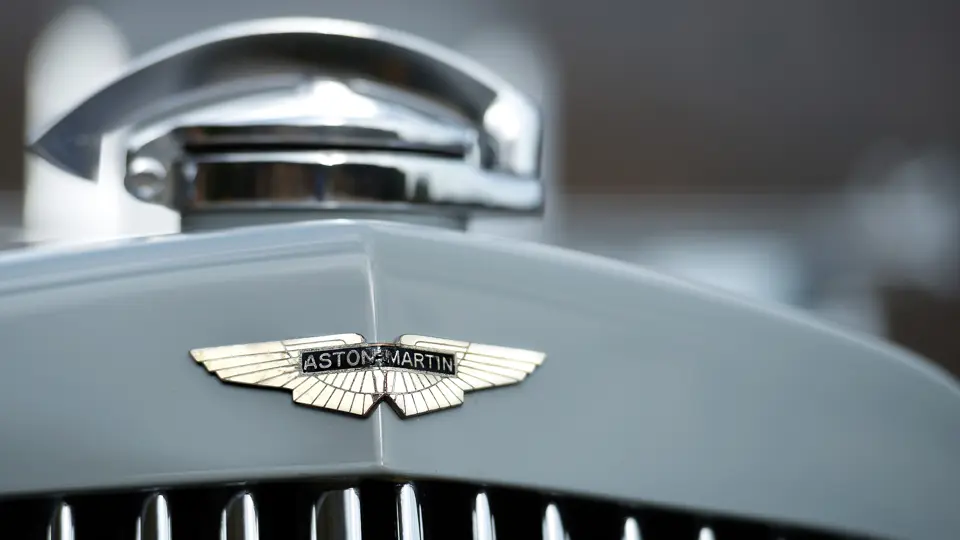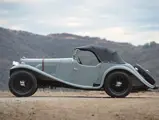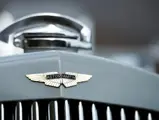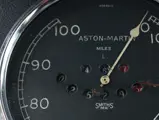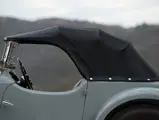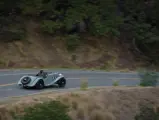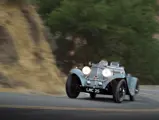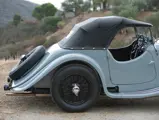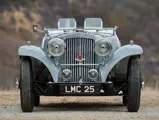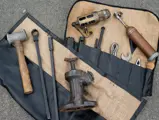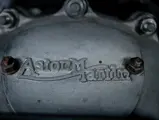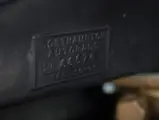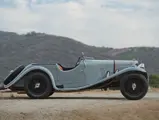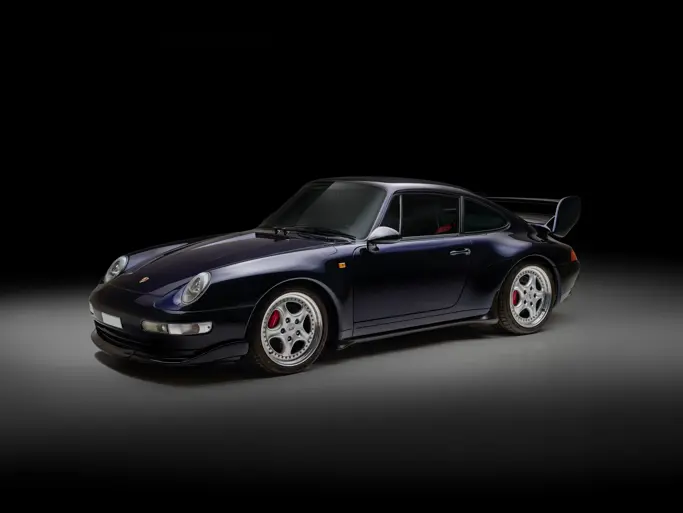
1939 Aston Martin 15/98 Short Chassis Open Sports
{{lr.item.text}}
$616,000 USD | Sold
{{bidding.lot.reserveStatusFormatted}}
- One of 50 built in this most attractive style
- Believed to have been the final 15/98 delivered
- International concours participant and award winner
- Equally at ease on touring events; very user-friendly
98 bhp, 1,949 cc inline four-cylinder engine with overhead camshaft, twin SU carburetors, Moss four-speed synchromesh manual transmission, live front and rear axles, and four-wheel mechanical Girling drum brakes. Wheelbase: 102 in.
Aston Martin was, and remains, the quintessential British maker of elegant, low-volume sporting cars. Lionel Martin and Robert Bamford, who had been selling Singer automobiles in partnership, founded Aston Martin in 1913. Martin was a racer at heart, so the pair drew on his success at the Aston Clinton Hill Climb in Buckinghamshire for the new company name. Their fundamental aim was to produce a light English sporting car with at least the quality of the French Bugatti.
By the mid-1930s, Aston Martin was indeed one of the most admired of British sporting makes, as it was now under the design and technical direction of Augustus “Bert” Bertelli, who started with the company in 1926. The cars were undeniably pretty, but they were also purposeful, solidly engineered, hand-built, quick, and agile. The signature 1.5-liter endurance sports racers continually evolved and gained great success, taking the team prize in the 1934 Tourist Trophy race in Ulster and finishing in an impressive 3rd place at the 1935 24 Hours of Le Mans. As a production car, the newly christened Ulster model made for a very desirable 100 mph sporting mount for the enthusiastic driver. Ultimately, though, its market was limited to a small number of serious (and well-heeled) sportsmen.
So Aston Martin took the decision to develop a more versatile offering for the company’s next generation of cars, starting with an updated new chassis by Bertelli, with credit to another brilliant engineer, Claude Hill. Significantly, the new specification mandated an increase in displacement to two liters, as its longer stroke could provide plenty of torque for a more relaxed motoring experience. With its four-cylinder, single overhead-camshaft wet sump engine, the new car developed some 98 brake horsepower, and it featured a four-speed Moss synchromesh gearbox and Girling rod mechanical drum brakes. Overall, it was an exceptionally well-balanced machine, now marketed as being the Two Litre range. Accolades piled up, such as the following summary from Autocar: “[The Aston Martin Two Litre is] softer, quieter, and more flexible, whilst acceleration and general suitability for everyday purposes have increased out of all knowledge.”
The car was originally targeted for debut at Le Mans in 1936, so a competition version of the Two Litre chassis was developed (known as the Speed Model), but a labor strike in France resulted in the cancellation of the race. Nevertheless, production continued, with an initial focus on touring configurations, such as a closed saloon, a drophead coupe by coachbuilder Abbott, and a 2/4 seat open tourer, with road going versions dubbed 15/98; this was a common designation that denoted Britain’s “taxable” vs. measured horsepower.
With excess capacity at the factory, a short-chassis version of the 15/98 was introduced with its most appealing shape to date, the Open Sports, which was bodied by Abbey Coachworks, of Willesden, London. One delightful feature of sport models such as this Abbey example is that the wind wings are removable, and with the windscreen flat forward, they slide into perches above the dash to act as aeroscreens, adding further panache to the attractive silhouette. After its debut at the inaugural Earl’s Court Motor Show in 1937, some 50 were built in this stylish form, out of the approximately 171 Two Litre cars produced in total by Aston Martin during the pre-war era. The result provided sporty, open motoring without the racing pretentions.
Chassis number G9/871/SO is believed to be the last 15/98 sold before the war, with its chassis dated July 1939. Its story picks up in 1951, with a charming four-page account of its “first restoration,” which was published in the Spring 1953 edition of the Aston Martin Owners Club Register by its new, second known owner, Mr. Louis Carvill. Later registries also confirm that a lady driver, Mrs. Carvill, earned a 1st in class in the 1953 Dublin M.C. Speed Trials. After a long period of documented ownership dormancy (approximately from 1960 to 1995), it was sourced for a California client by pre-war Aston Martin specialist Andy Bell, proprietor of Ecurie Bertelli, of Buckinghamshire, United Kingdom.
The car was stored for some years at Kevin Kay Restorations in Redding, California, before a comprehensive body-off restoration was commissioned there. During the restoration, a period-correct engine was supplied by Andy Bell, and the whole process was completed in 2011. The car was finished in “Elephant's Breath Grey,” with Saddle Tan seats and a Black folding top and carpets, and great care was taken to preserve original details where appropriate. Chassis G9/871/SO and its owner have enjoyed participation in multiple events since its restoration, earning numerous awards for outings, which include the Kirkland Tour d'Elegance and the Kirkland Concours (Participant's Choice Trophy, chosen by Ed Hermann, 2011), the Kuwait Concours d'Elegance (2012), The Elegance at Hershey and The Grand Ascent Hill Climb (Spirit of Competition Trophy, 2012), the Aston Martin Owners Club Lime Rock Classic Richard Stafferton Tour and Club Concours (First Place, Prewar, 2012), the Simeone Foundation Automotive Museum’s Best of British exhibit (Aston Martin Tribute, 2013), and the Pebble Beach Concours d'Elegance (2013), for which it was freshly fettled and detailed by marque specialists at Steel Wings, of Hopewell, New Jersey.
Today, it remains in superb show condition, and it is proven as fully sorted mechanically for touring and road rally use. An RM specialist who had recently ran the car extensively was impressed with its performance and easy handling, as well as with the fact that it could keep up with 70 mph traffic on the Los Angeles freeways!
This lovely and user-friendly Aston Martin is offered with a tonneau, proper tool roll, jack, handle and hammer, ultra-rare owner’s instruction book, copies of the original factory build record (with notations indicating factory service in 1949 and 1956), period articles, and an original sales brochure. A thick document file, which includes correspondence with former owners and the club registrar, restoration invoices, service maintenance receipts, event certificates and programs, and a photo disc, is also included.
Now, as then, this outstanding short chassis Open Sports model exemplifies the quintessential pre-war English roadster and all the rewards of ownership that complement the rich history behind the Aston Martin mystique.
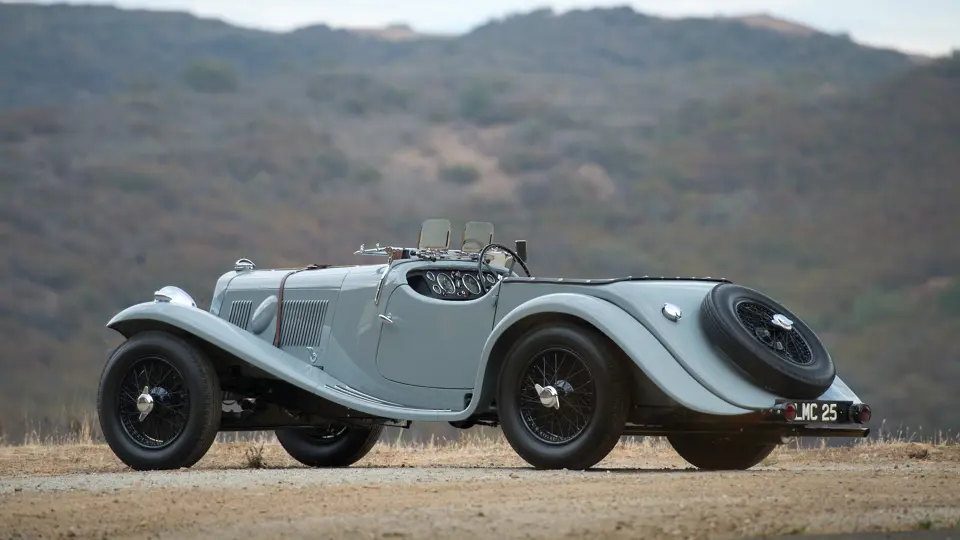



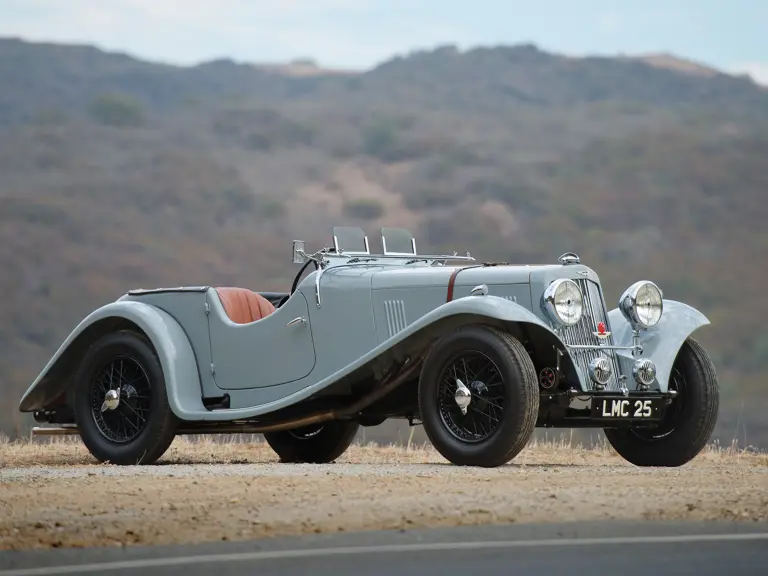
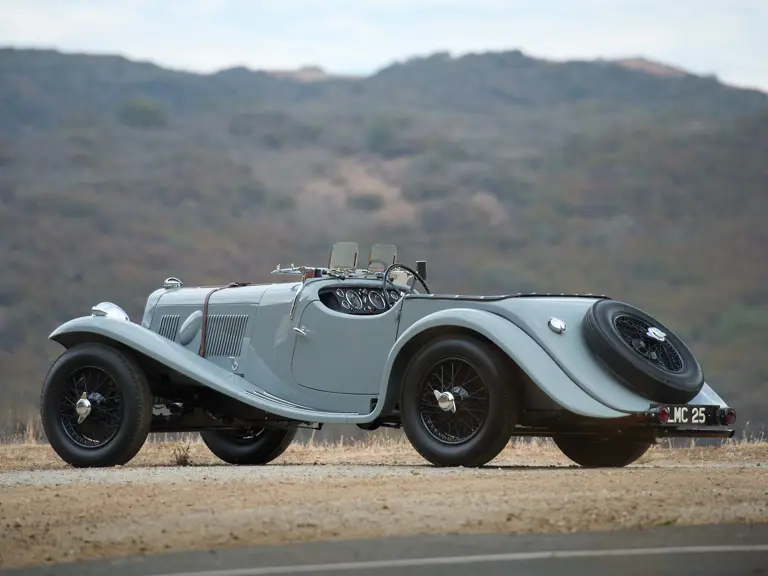
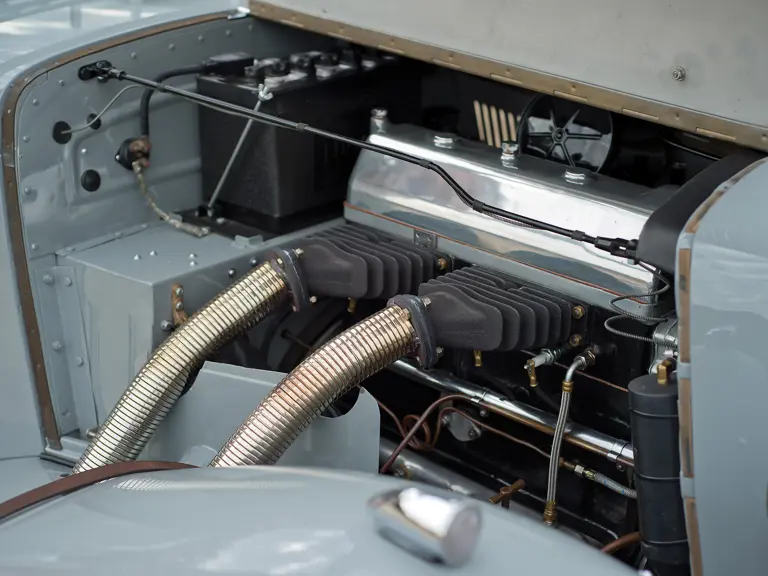
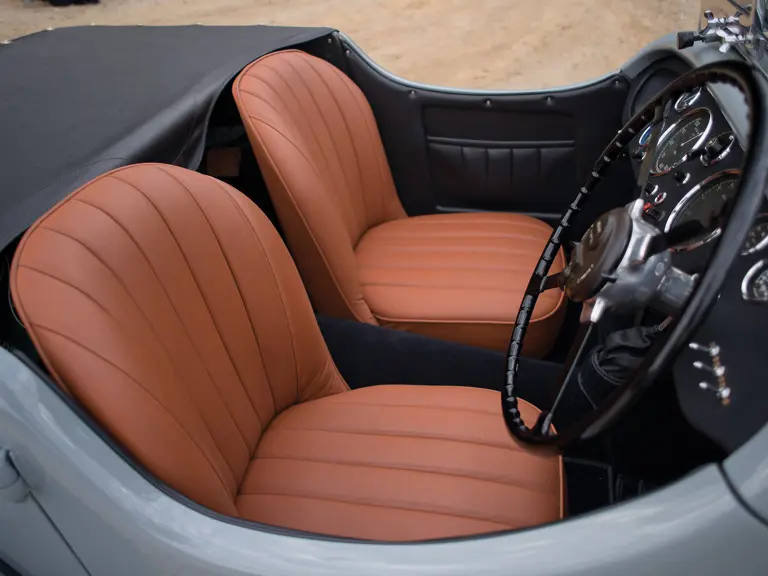
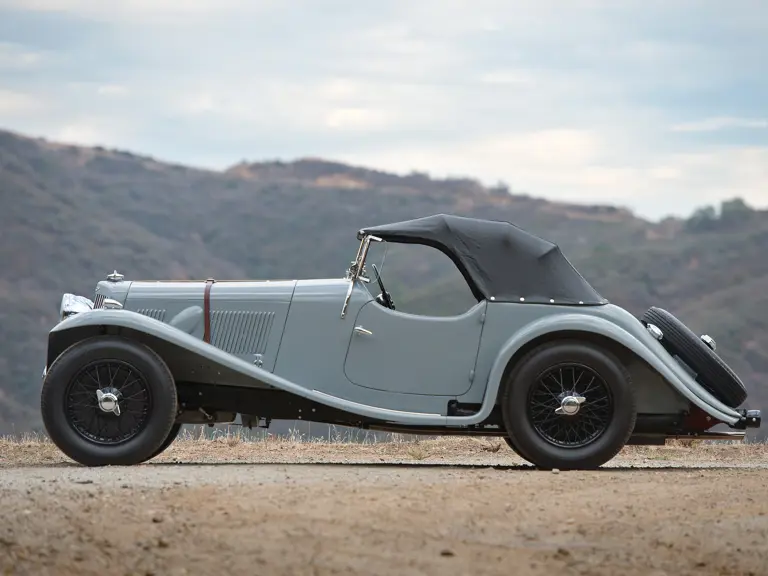
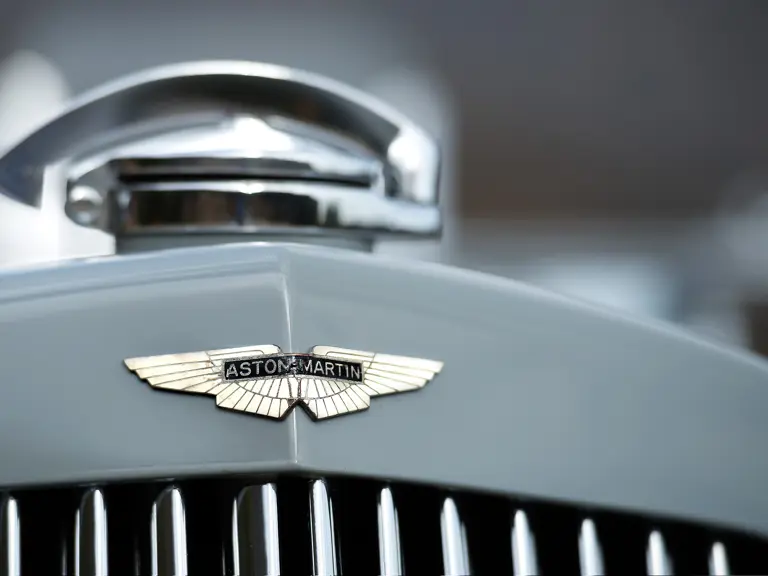

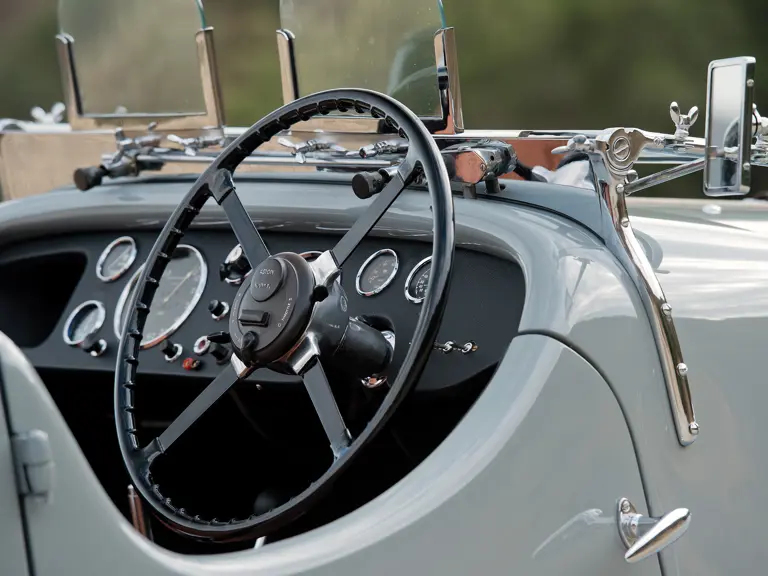
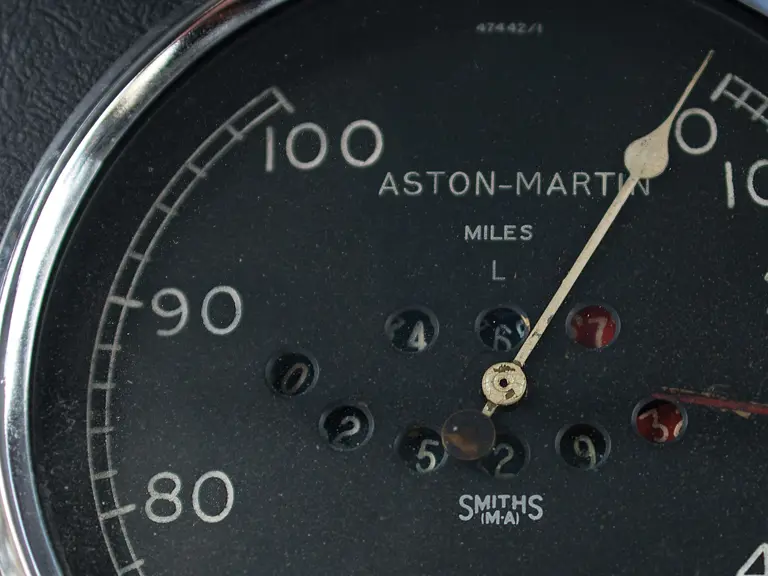
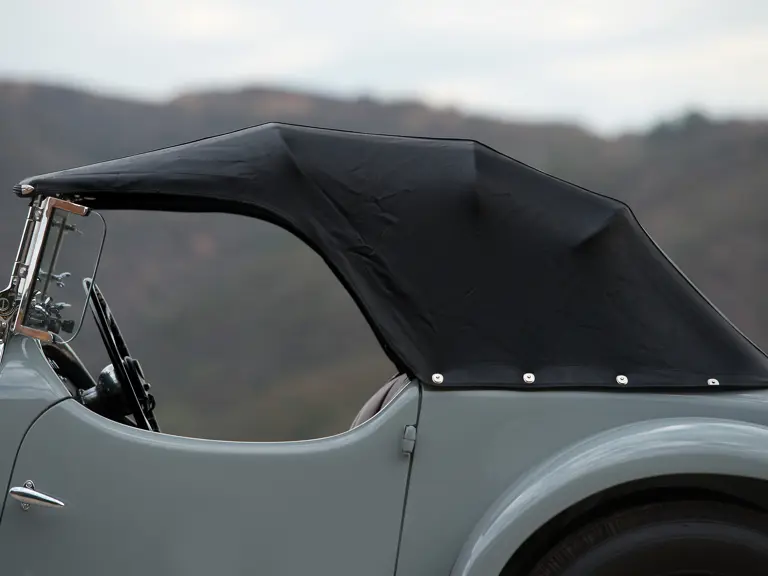
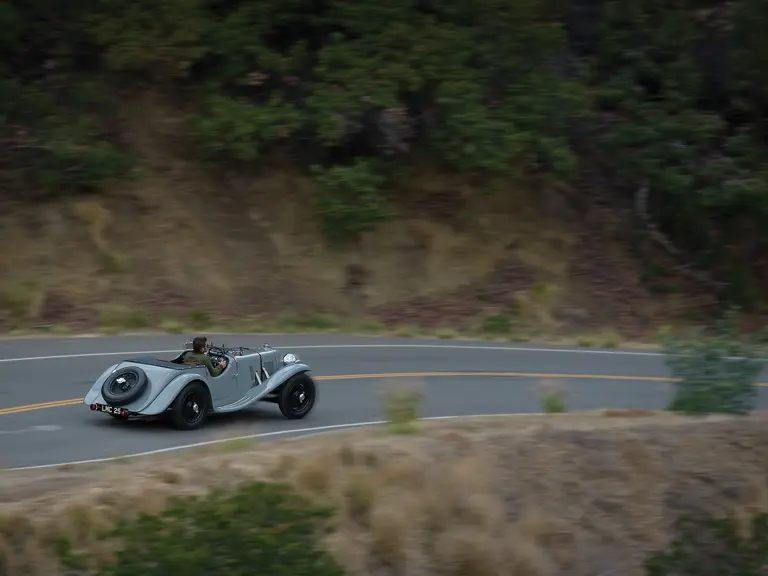


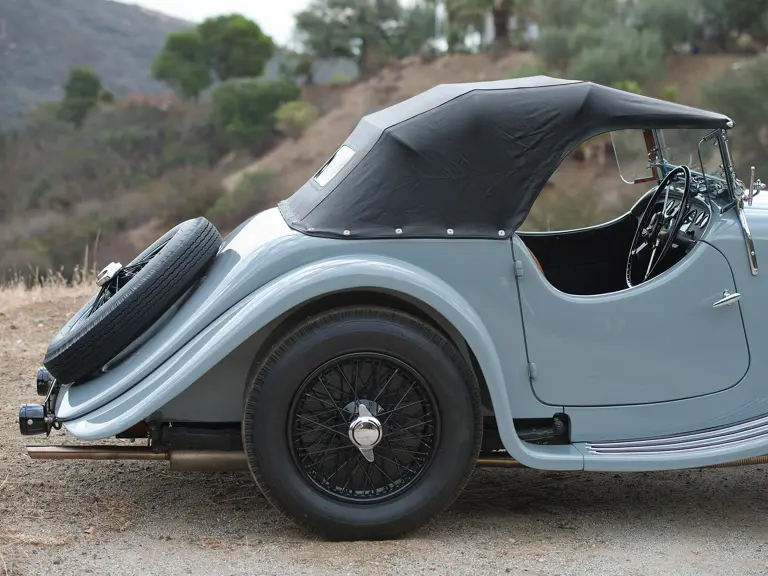
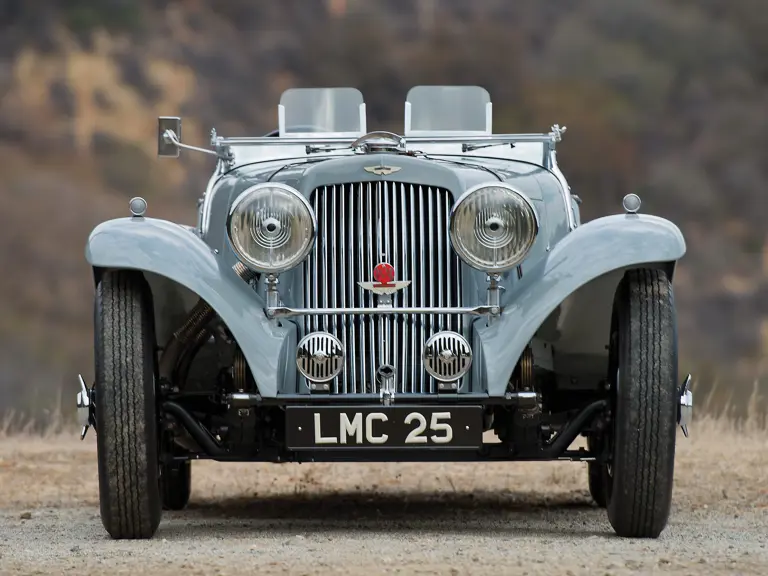
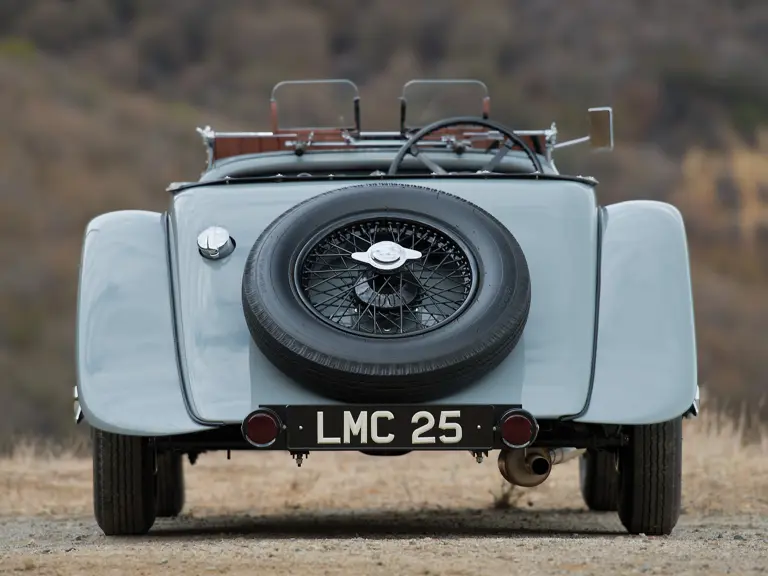
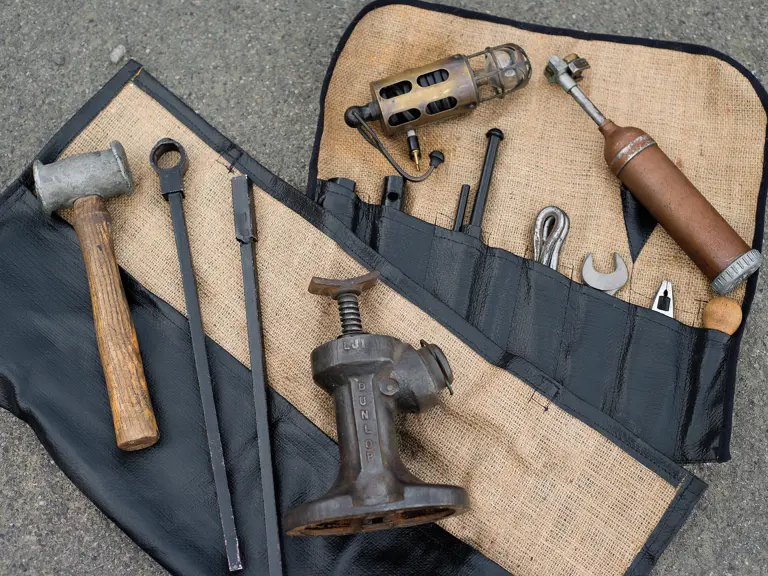
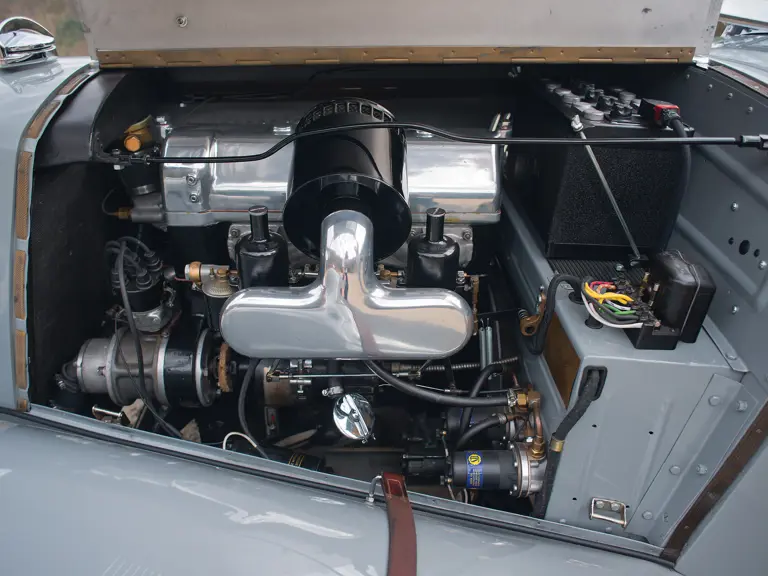
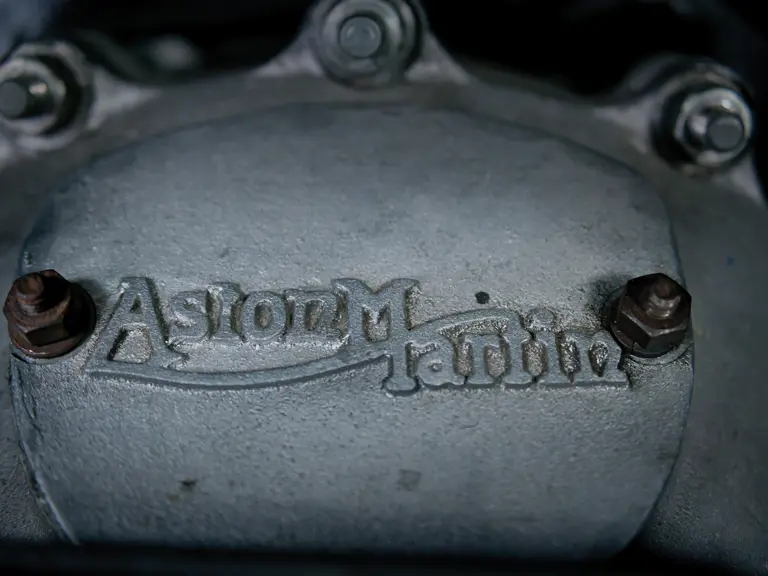
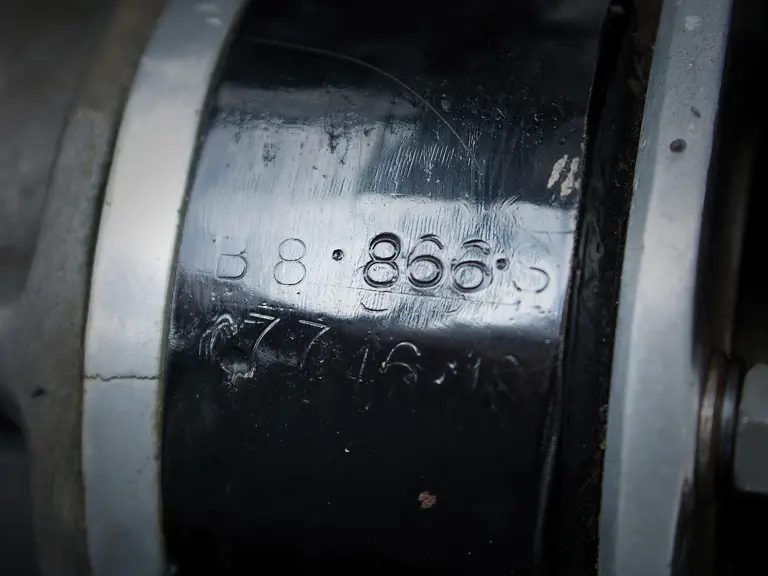

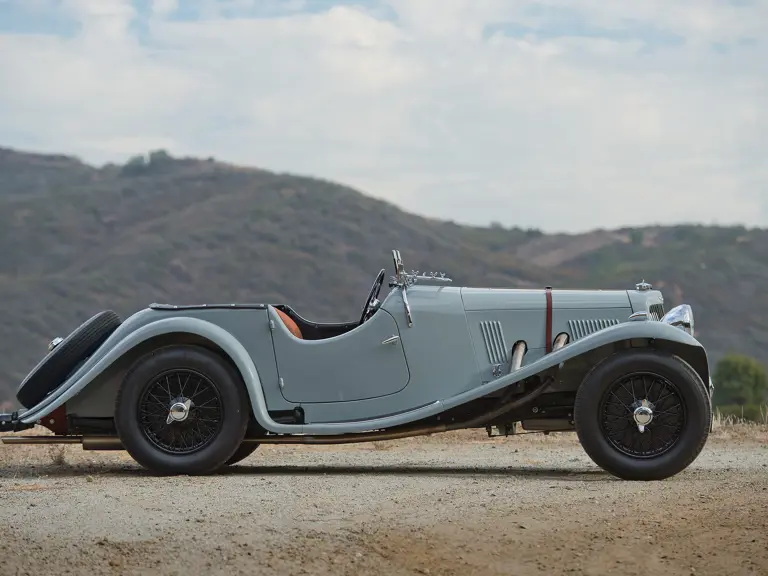
 | Amelia Island, Florida
| Amelia Island, Florida
